
10 Ways to Be Good to Your Joints
Mar 28, 2021
Introduction
Cracking or popping of joints while walking, joint stiffness while walking up the stairs or bending; do all these symptoms sound familiar to you? If yes, you may be experiencing a joint condition called osteoarthritis (OA)!
Here are 10 simple tips for you to treat your joint better.
1. Be active every day

Go for aerobic workouts such as Zumba to burn calories; top up with resistance training to strengthen muscles around painful joints, and stretching exercises to increase flexibility and reduce stiffness.
Tip: Start with low impact exercises that put lesser stress on your joints such as brisk walking, cycling, swimming.
2. Healthy body weight

Excessive body weight is one of the main risk factors of OA as it exerts extra stress on weight-bearing joints such as knees, spine, hips, ankle. Each pound of weight gained, exert 4 times stress to knees and 6 times stress to hips. Aim for a healthy BMI of 18.5-23 kg/m2 or a 10% bodyweight reduction if you are overweight or obese.
3. Prevent joint injury
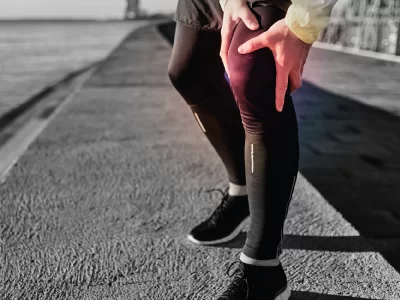
Make sure to warm up for at least 5-10 minutes before starting any exercises to prevent injuries to muscles, joints, ligaments or tendons. Be cautious when carrying heavy loads. Make sure to carry them close to your body, use your palms or arms instead of your hands, or slide instead of lifting whenever possible; which exert less stress on joints.
Tip: Don’t repeat the same exercise to prevent stress on the same joints every day. Rotate among several different exercises.
4. Rest

Exercise can indeed help in maintaining a healthy joint. However, too much of a good thing can be bad. Over-exercising may result in overexertion on your joints. The key is BALANCE. Take a break if your joints are swelling. Allow it to heal to avoid worsening or reduce the risk of OA.
5. Control blood glucose level
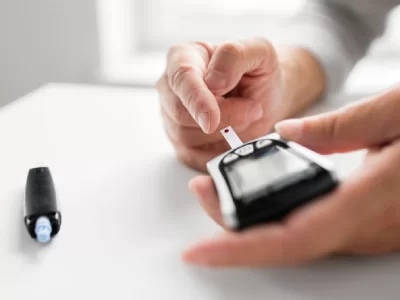
Diabetes may be a significant risk factor of OA, says Arthritis Foundation. High glucose levels can speed up the formation of certain molecules that make cartilage stiff and trigger inflammation that leads to cartilage loss. Keeping your blood glucose levels in check can help to prevent and ease OA.
6. Functional footwear over fashion
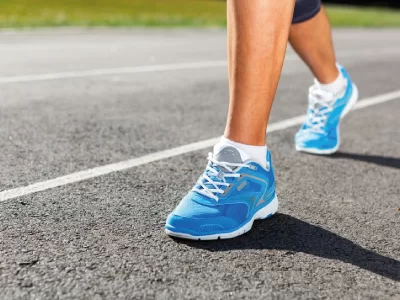
Choose comfortable, fitting and supportive footwear instead of great-looking but aching shoes. Make sure your shoes have sufficient cushioning to aid in shock-absorbing during activities and are squared or rounded at the toe so that your toes can move around freely.
7. Maintain correct posture

Keeping proper posture can help in preserving and exerting less stress on joints. Some simple tips include keeping your back straight, especially when lifting heavy objects, bend at knees and hips instead of your waist, separate feet to widen the base of support, use a firm chair with good arms and back support.
8. Assistive devices when necessary
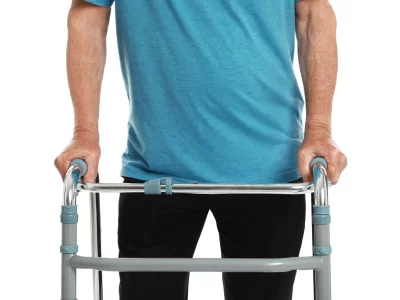
There are various assistive devices available to help reduce stress on painful joints. Wearing knee pads or using a walking stick or frame can help in alleviating knee or hip pain. Other examples include raised toilet seats, shower benches, jar openers etc.
9. Healthy balanced diet
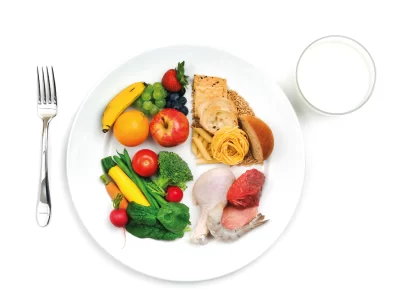
A wholesome diet rather than a single nutrient was found to benefit joint health. Make sure your everyday diet is filled with a variety of antioxidant-packed fruits and vegetables, whole grains, low-fat dairies, lean meat, fish and poultry as well as healthy fats. Anti-inflammatory properties of omega 3 fatty acids found in oily fish may also benefit OA. Aim to consume at least 2 servings of oily fish per week. 1
10. Supplement your joints
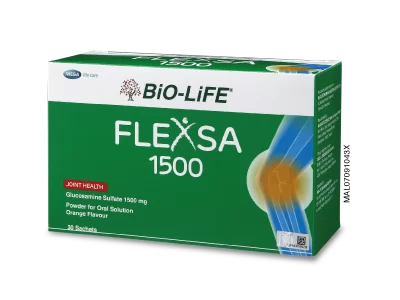
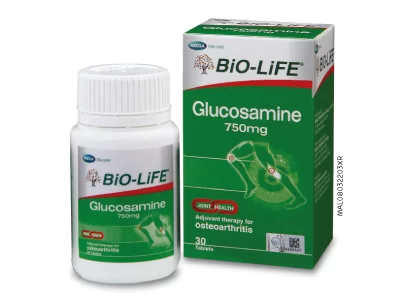
Glucosamine is one of the popular nutraceuticals that helps in OA. It serves as one of the components to stimulate the synthesis of glycosaminoglycans (GAGs), which is the building blocks require in rebuilding joint cartilage; thus helping in delaying joint degradation. It may also help in anti-inflammation. 2
Studies have indicated that supplementing daily with 1500mg crystalline glucosamine sulfate may offer effective, long-term treatment for OA by providing a significant reduction in pain, maintenance of joint space, and overall slowing of OA disease progression. 3,4
References
- Osteoarthritis and diet. British Dietetic Association. Retrived from: https://www.bda.uk.com/resource/osteoarthritis-diet.html
- Jerosch J. (2011). Effects of Glucosamine and Chondroitin Sulfate on Cartilage Metabolism in OA: Outlook on Other Nutrient Partners Especially Omega-3 Fatty Acids. Int J Rheumatol.
- Kucharz E, Kovalenko V, Szántó S, Bruyère O, Cooper C, Reginster J. (2016). A review of glucosamine for knee osteoarthritis: why patented crystalline glucosamine sulfate should be differentiated from other glucosamines to maximize clinical outcomes. Current Medical Research and Opinion. 32(6):997-1004.
- Bruyère O, Cooper C, Al‑Daghri N, Dennison E, Rizzoli R, Reginster J.(2018). Inappropriate claims from non-equivalent medications in osteoarthritis: a position paper endorsed by the European Society for Clinical and Economic Aspects of Osteoporosis, Osteoarthritis and Musculoskeletal Diseases (ESCEO). Aging Clinical and Experimental Research. 30:111–117.
- 16 Joint-protection Tips. Arthritis Foundation. Retrieved from: https://www.arthritis.org/health-wellness/healthy-living/managing-pain/joint-protection/16-joint-protection-tips



